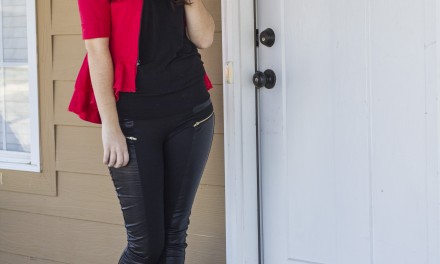By Simone Shadd
American racism is its own exceptional brand of discrimination. It is a series of oxymorons reinforced by hypocrisy and fortified by ignorance. It is one size fits all, but it takes many forms. Tackling a beast that changes forms as often as the wind changes directions and yet at its core remains the same, has been a cross-generational challenge. But, in our climate we have been presented with the unique opportunity to begin amending past indiscretions by engaging in meaningful and compassionate dialogues. Heated (perhaps overly so) debate can and does cross the lines of civility. Despite some rhetoric leaving scars, progress can be seen in the frequency of debate. No longer are we interested in covering our blemishes. Regardless of our sordid past, America’s youngest generation seems hellbent on addressing our sins. As a collegiate, lower- income and multiracial woman living somewhere between being at a disadvantage and having white privilege – modern racism fascinates me.
The problem lies in the way race is discussed. The conversation surrounding race relations is presented as a dichotomy, producing a distorted otherness-oriented view. If you are one thing, then you can not be the other. No room for nuance is allowed in that sort of rhetoric, and therein lies the danger. Without nuance or accurate knowledge, i.e. a non-revisionist view of history, any discussion about race stands on weak pillars of generalized ideology. While the most extreme examples of racism find their way onto our news feeds, it is the systemic unseen issues and microaggressions that have the most substantial individual impact.
I am a person of color. I am also white. My features make me racially ambiguous. Ambiguity leaves room for interpretation, and interpretation creates the space for wildly variable interactions. It was not until I moved to the south, from a decisively more diverse region, that I noticed this behavior. Non-violent racially charged interactions aren’t more frequent in Alabama than they are in California, they are just more pronounced. In place of suspicious stares, some southern folk opt for a more direct approach. For instance, I needed a non-driver identification card for the state of Alabama. I went to the State Trooper’s office, as one does, and during the normally mundane question and answer session that everyone must power through to obtain any kind of identification documents, my interrogator and I came to the question of ethnicity. Had I been a more recognizable shade of brown, perhaps she would have asked me for my ethnicity, but instead she said, “You’re Hispanic, right?” On the surface this question seems innocent, but its appearance of banality highlights the social conditioning involved in racism.
Just to play fair – because the south isn’t the only region guilty of racial prejudice – another deceptively trite microaggression occurred a few minutes before my U.S. government and politics class during my senior year of high school in California. One of my teachers, out of curiosity, asked me about my ethnicity and upon telling her she replied “Wow. You’re like an ethnic smoothie.” The aforementioned incident is especially important because it’s accidental. Casual racism can arise in infinitesimal amounts, but with each microaggression, that amount grows until it becomes impossible to ignore. Dwelling in the space between whiteness and otherness has given me the unique opportunity to see how racism is built into our language. While my teacher might have been admiring my culturally diverse background, her word choices indicate the long-standing exoticism and objectification of minorities (especially of the brown variety). No living person wants to be compared to a smoothie.
Moving back to my southern experience, being perceived as white definitely has its advantages. When I first moved I had not yet acquired my summer glow. I’m more white presenting when I’m paler. My mother and I were in a leasing office preparing to sign a lease and to our surprise, despite my severe lack of qualifications, one of the leasing agents let me know about a new position opening with the company and encouraged me to apply. Without knowing a single thing about me other than the color of my skin, this agent extended an employment opportunity to me. Privilege comes in many forms, but people of color -almost certainly more qualified than myself – experience bars to employment because systemic racism has conditioned white employers to overestimate the skills of white candidates based solely on appearance.
The dichotomous conversation I mentioned earlier is more than just words. Like the words in a powerful speech, everyday words carry weight. The “either/or” language of our debates bleed into the “either/or” experiences I have had. Thus, in seeing through both lenses, the arguments about language no longer seem frivolous. Language shapes the way we gauge the world, and the language of modern racism objectifies and separates us from each other. The language of distance, meaning diction that undermines our shared experiences by emphasizing our differences, removes us just far enough to underestimate the impact of our words. As a physical representation of the grey area, society at large could benefit from standing in my shoes. This issue is quite literally not just black and white. The only way we address a complex issue is through a dynamic approach, and that means inviting complication and welcoming discomfort.
Racism has many faces. Its omnipresence requires active and continuous work to combat its discriminatory aftermath. Its variable forms are almost as variable as its solutions and perhaps that’s the most fascinating part in this endless struggle for tangible equality.
Photos by Dana Levin







